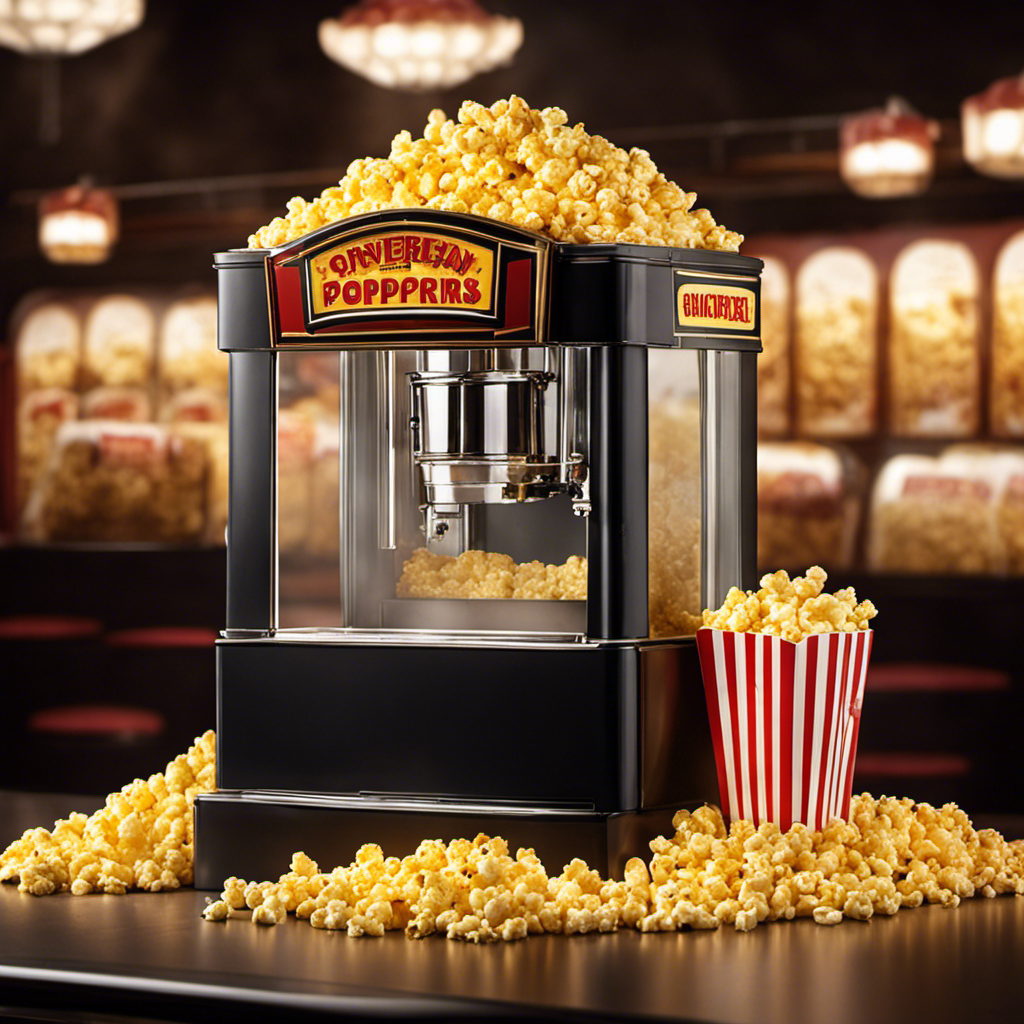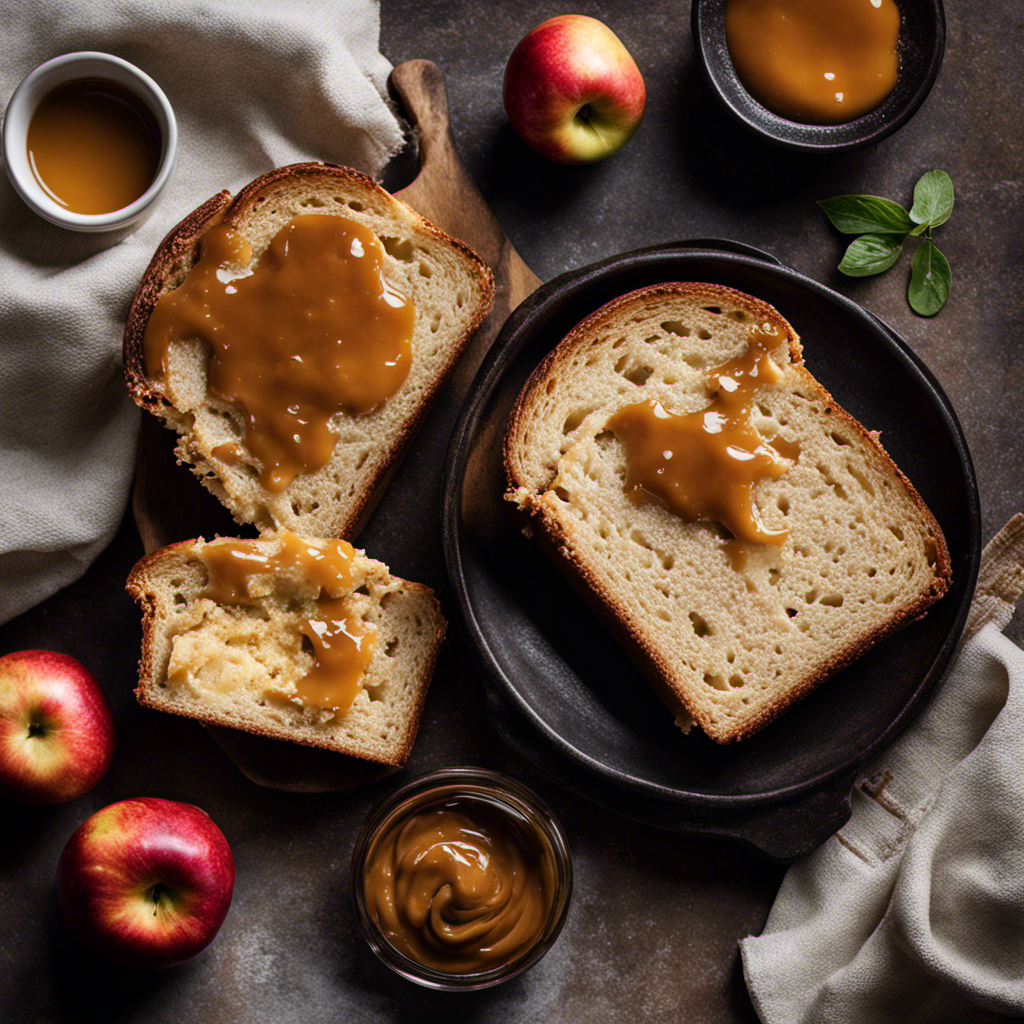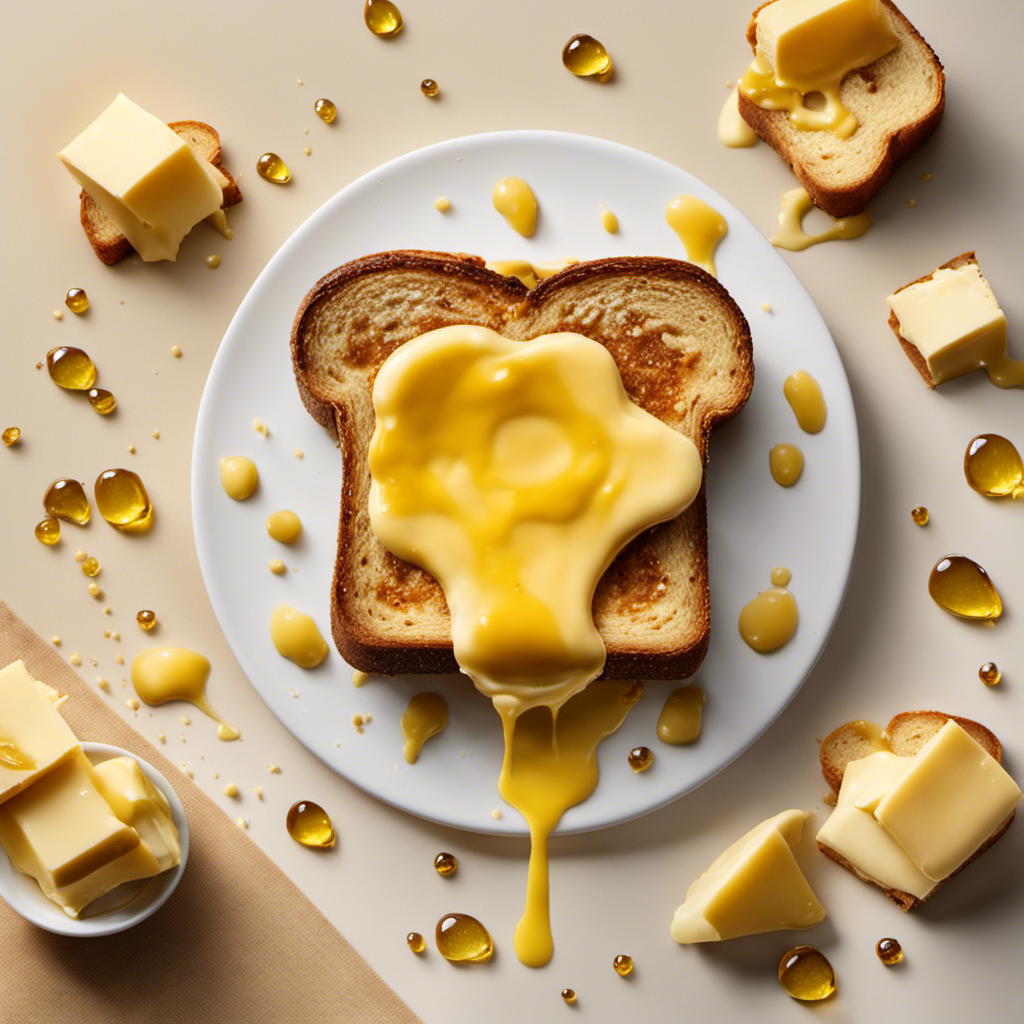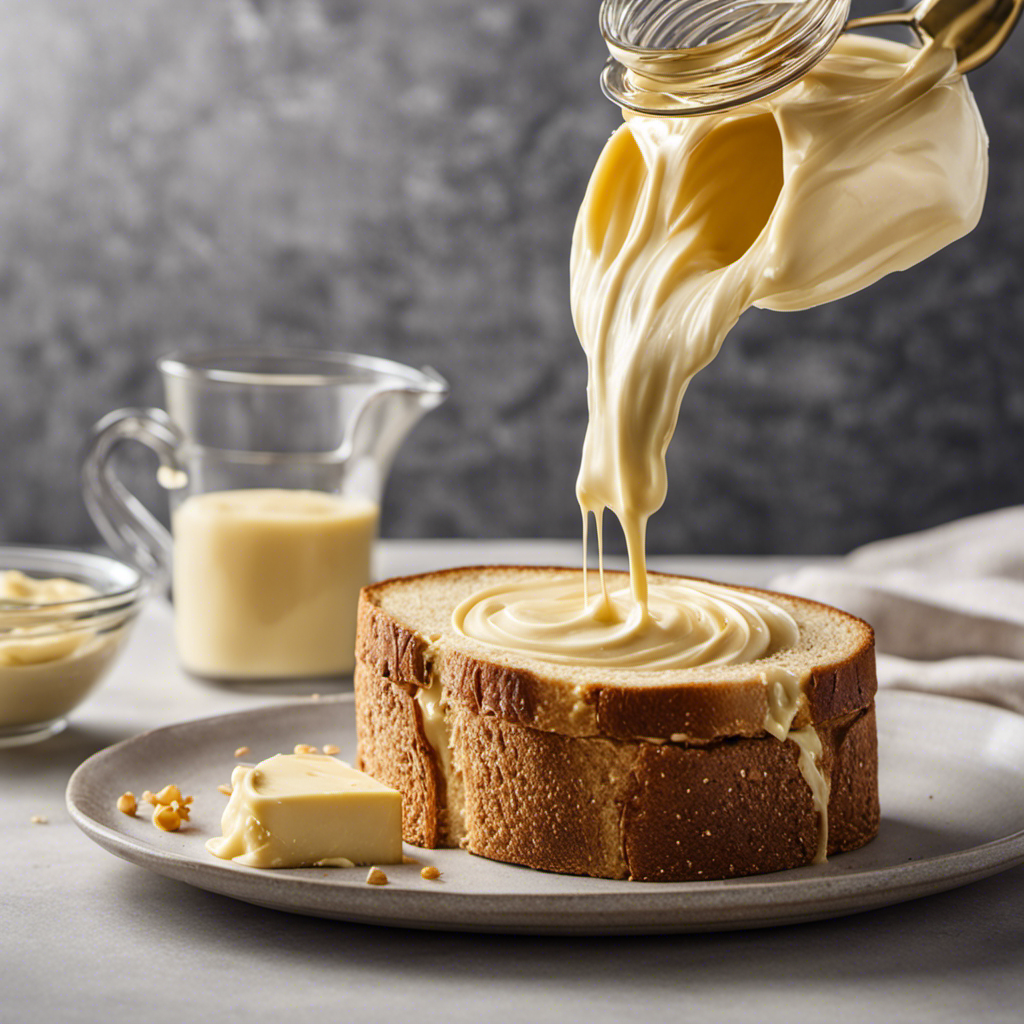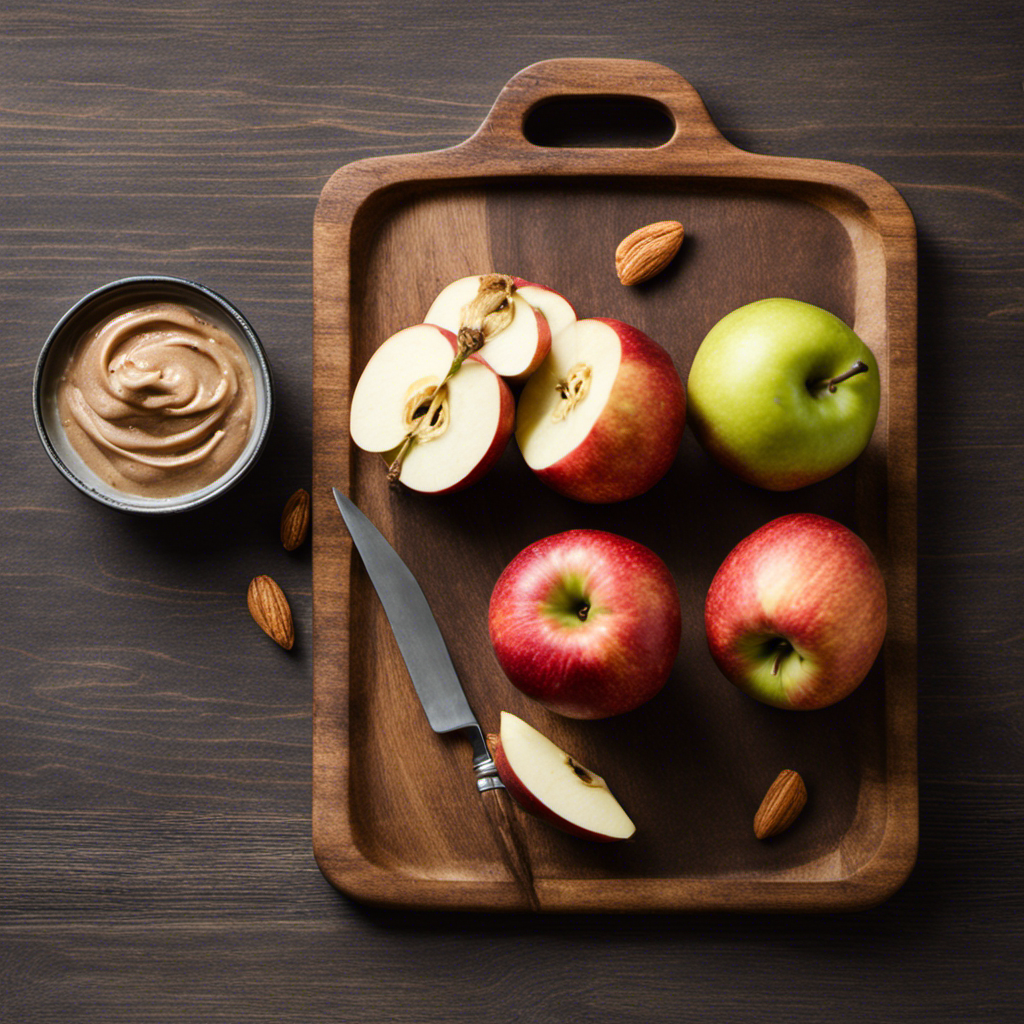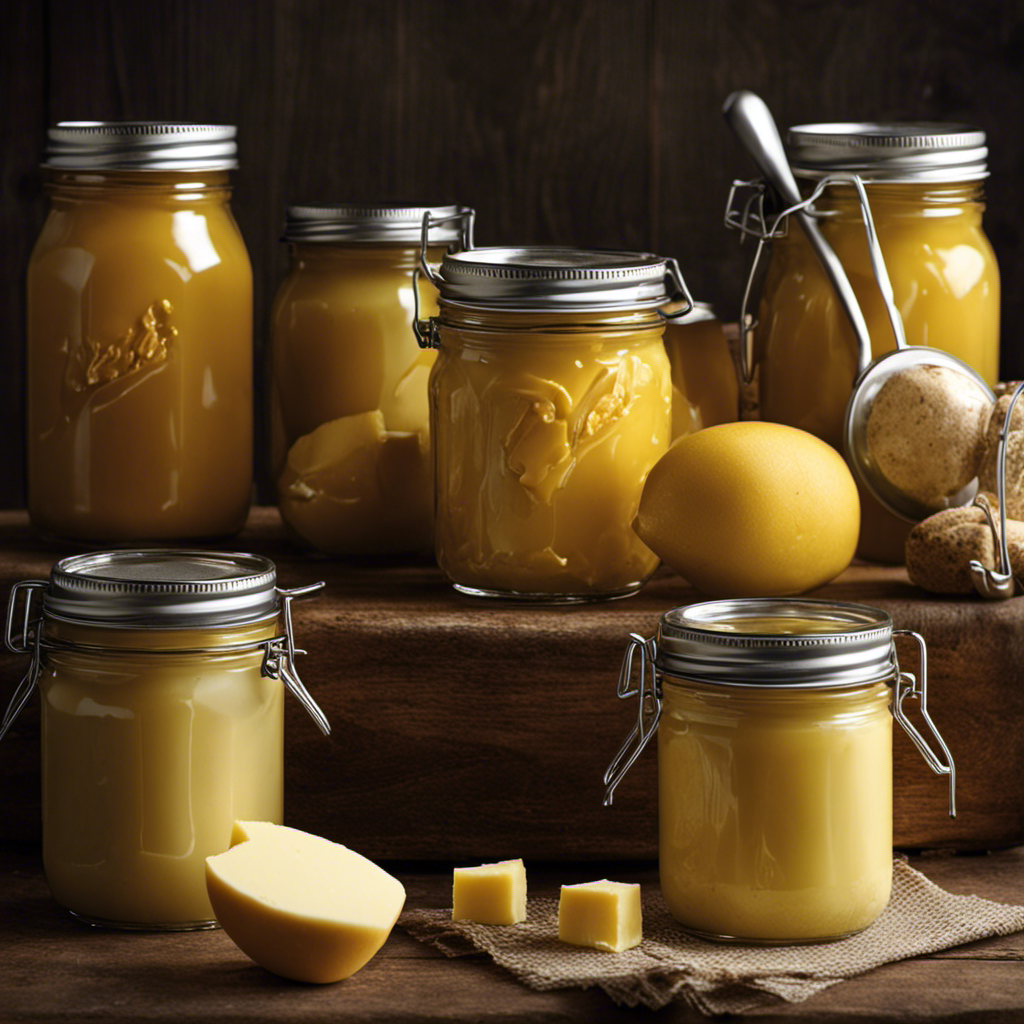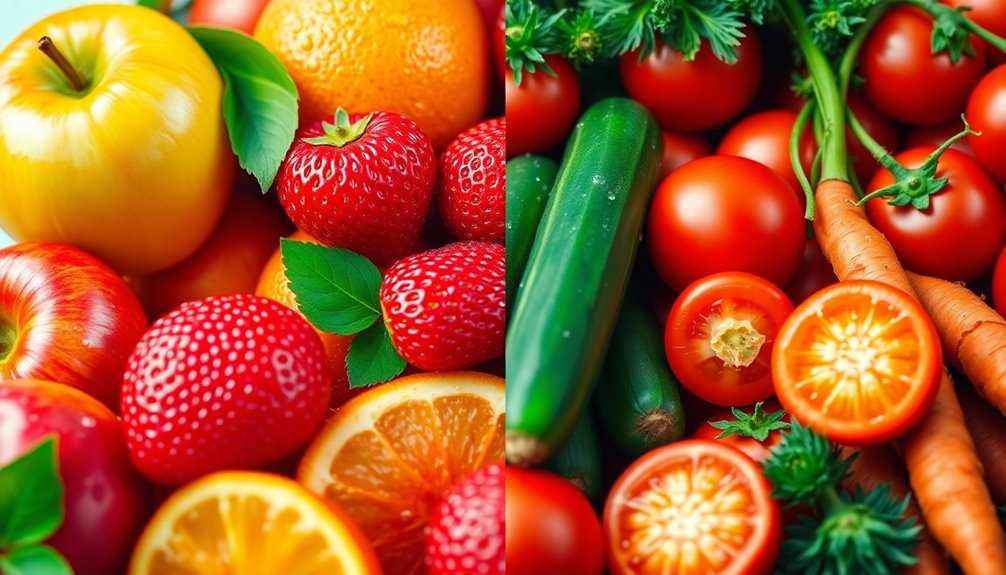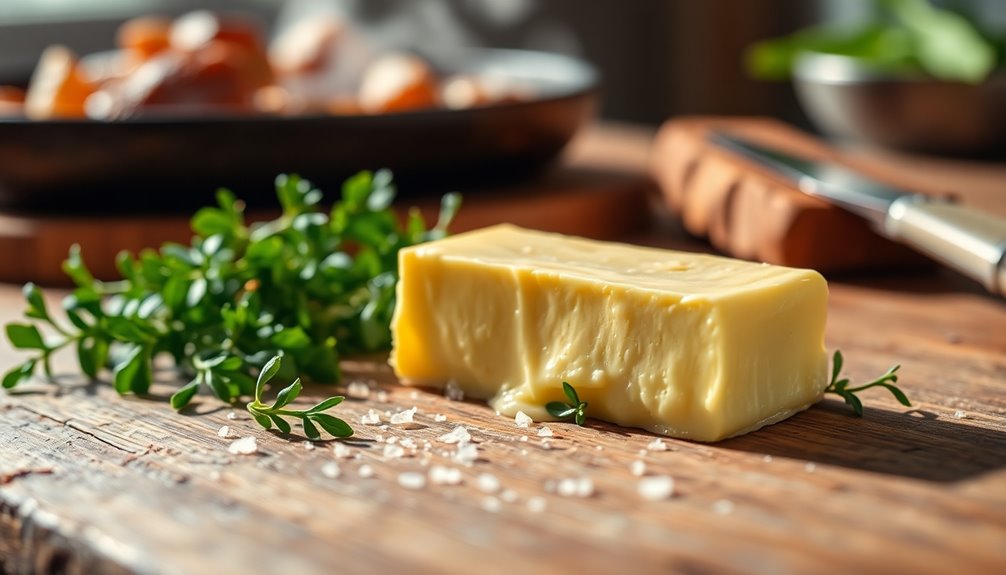Sitting in the dimly lit cinema, I was enveloped by the enticing scent of just-popped popcorn that filled the air. My thoughts drifted, contemplating the timeless inquiry: What is the substance movie theaters utilize for butter?
Curiosity consumed me, driving me to uncover the secrets behind this elusive ingredient. In this article, we will delve into the world of movie theater butter, comparing it to regular butter, exploring the mysterious alternatives, and unraveling the science behind its creation.
Prepare to feast your mind on the technical and precise journey that lies ahead.
Key Takeaways
- Movie theaters use popcorn salt, a finely ground salt specifically designed to stick to popcorn, as the secret ingredient for their butter.
- Butter flavor additives are used to enhance the taste of movie theater popcorn.
- Flavored oils like coconut or olive oil, nutritional yeast, and spices can be used as alternatives to butter in popcorn toppings.
- Movie theaters often use a butter-flavored oil that is a mix of natural and artificial flavors to mimic the taste of butter.
The Secret Ingredient
The secret ingredient that movie theaters use for butter is actually popcorn salt. Movie theaters have perfected their popcorn recipe over the years, and the addition of popcorn salt is what gives their butter that distinct flavor.
Popcorn salt is a finely ground salt that is specifically designed to stick to popcorn. It is made by grinding regular salt into a fine powder, which allows it to distribute evenly on the popcorn. The use of popcorn salt ensures that every kernel is coated with a layer of salty goodness.
Additionally, movie theaters often use butter flavor additives to enhance the taste of their popcorn. These additives are carefully formulated to replicate the rich and buttery flavor that we associate with movie theater popcorn.
Movie Theater Butter Vs. Regular Butter
When it comes to movie theater butter versus regular butter, there is a noticeable difference in taste. Movie theaters often use a butter substitute instead of regular butter. This is because movie theater butter is specifically formulated to have a rich and savory flavor that enhances the popcorn experience. Regular butter, on the other hand, may not have the same level of flavor intensity.
Additionally, butter substitutes used in movie theaters are designed to have a lower water content, ensuring that the popcorn stays crispy and doesn’t become soggy. From a nutritional standpoint, regular butter contains more calories and saturated fat compared to the butter substitutes used in movie theaters. So, if you’re looking for a healthier option, it’s better to opt for the butter substitute used in movie theaters.
The Popcorn Butter Mystery
For the ultimate popcorn experience, you might be wondering about the mystery behind popcorn butter. As a popcorn enthusiast, I’ve done some research to uncover the truth. Here are three key points to consider:
-
Popcorn topping alternatives: While butter is the classic choice, there are other options available. These include flavored oils like coconut or olive oil, which add a unique taste to your popcorn. Additionally, you can try nutritional yeast for a cheesy flavor or spices like paprika or cayenne pepper for a kick.
-
Butter substitutes: Many movie theaters use a butter-flavored oil instead of real butter. These oils are specially formulated to mimic the rich taste of butter without the need for refrigeration. They are often a mix of natural and artificial flavors, giving your popcorn that familiar buttery goodness.
-
Healthier options: If you’re looking for a healthier alternative, consider using a spray-on butter substitute. These products provide a light coating of butter flavor without adding excessive calories or fat.
Now that we’ve explored the world of popcorn butter alternatives, let’s dive into the various options available and their unique characteristics.
Unveiling the Butter Alternatives
I’ve conducted extensive research on healthier butter options and found some interesting alternatives to traditional butter.
These alternatives not only provide a healthier option but also offer unique taste and texture profiles.
In this discussion, I’ll compare the taste and texture of these healthier butter options to help you make an informed decision.
Healthier Butter Options
You can try using healthier butter options at movie theaters. When it comes to enjoying a movie, the buttery popcorn is often the highlight. However, traditional butter can be high in saturated fat and calories. That’s why many theaters now offer healthier butter substitutes that provide a tasty alternative without sacrificing flavor.
Here are three benefits of using alternative butter options:
-
Lower in saturated fat: Healthier butter substitutes are often made from plant-based oils, such as coconut or avocado oil. These oils contain less saturated fat compared to traditional butter, making them a better choice for your heart health.
-
Reduced calorie content: Alternative butter options can help you cut down on calories. By using lighter oils or natural flavorings, theaters are able to offer a buttery taste with fewer calories per serving.
-
Suitable for dietary restrictions: Many theaters now offer vegan or dairy-free alternatives for those with dietary restrictions or preferences. These options allow everyone to enjoy the buttery goodness of popcorn without compromising their dietary needs.
Taste and Texture Comparison
The taste and texture of healthier butter substitutes can be surprisingly similar to traditional butter. Through taste comparison and texture analysis, researchers have found that these substitutes can mimic the rich, creamy flavor and smooth, spreadable consistency of butter.
In terms of taste, these alternatives often have a slightly different, but still satisfying, flavor profile. Texture-wise, many butter substitutes are able to achieve a comparable smoothness and creaminess, making them suitable for spreading on toast or using in baking.
The development of healthier butter substitutes has been driven by a desire to provide options that are lower in saturated fat and cholesterol, while still delivering a satisfying taste and texture experience. This research-driven approach has resulted in innovative products that cater to the needs of health-conscious consumers without compromising on quality.
The Science Behind Movie Theater Butter
In this discussion, we will delve into the fascinating world of butter flavor chemicals and uncover the potential health effects of butter.
As a researcher, it’s crucial to understand the intricate composition of butter flavor chemicals and how they contribute to the tantalizing taste of this beloved condiment.
Additionally, we will explore the various health implications that may arise from consuming butter, shedding light on the scientific evidence behind its effects on our well-being.
Butter Flavor Chemicals
Grab some popcorn and get ready to learn about the butter flavor chemicals that movie theaters use! The use of butter flavor in movie theater popcorn has been extensively researched to enhance consumer perception.
Here are three key findings from butter flavor research:
-
Chemical Composition: Butter flavor in movie theater popcorn is typically created using artificial chemicals that mimic the taste and aroma of real butter. These chemicals are carefully selected and blended to achieve the desired flavor profile.
-
Flavor Enhancers: Besides the basic butter flavor compounds, additional flavor enhancers, such as diacetyl, are often added to create a richer and more intense buttery taste. These enhancers work by stimulating the taste receptors on our tongues, enhancing the overall flavor experience.
-
Consumer Preference: Research has shown that consumers perceive popcorn with butter flavor as more flavorful and enjoyable compared to plain popcorn. The addition of butter flavor enhances the sensory experience and increases consumer satisfaction.
As we delve into the health effects of butter, it’s important to understand the complex chemistry and consumer perception behind movie theater butter flavor.
Health Effects of Butter?
Ready to discover how butter can impact your health?
Butter is a dairy product that has been a staple in many diets for centuries. While it is delicious and adds flavor to a variety of dishes, it is important to consider its potential risks and nutritional value.
Butter is high in saturated fat, which has been linked to an increased risk of heart disease. However, recent research suggests that the relationship between saturated fat and heart disease is complex and not fully understood.
Additionally, butter contains important nutrients such as vitamins A, D, and E, as well as omega-3 fatty acids. These nutrients are essential for proper brain function, immune system support, and overall health.
It is important to consume butter in moderation and balance it with a healthy diet to maximize its nutritional benefits while minimizing potential risks.
The Butter Dispensing Process
You might be wondering how movie theaters actually dispense the butter onto your popcorn. Well, it’s a precise process that involves a specially designed butter dispenser. These dispensers are carefully maintained to ensure that the butter is always fresh and flavorful.
Here’s a breakdown of the butter dispensing process:
-
Butter dispenser maintenance: Movie theaters understand the importance of keeping the butter dispensers clean and in good working condition. Regular cleaning is essential to prevent any build-up or contamination that could affect the taste and quality of the butter.
-
Butter flavoring process: The butter used in movie theaters is often a butter-flavored oil. This oil is heated and mixed with artificial flavorings to create that distinct buttery taste. The dispenser carefully controls the flow of the butter-flavored oil to ensure that each kernel of popcorn is coated evenly.
-
Precise dispensing: The butter dispenser is designed with a nozzle that allows for precise and controlled dispensing. This ensures that the butter is evenly distributed over the popcorn, giving you that delicious buttery flavor in every bite.
Behind the Scenes: Making Movie Theater Butter
Behind the scenes, there’s a meticulous process involved in creating the buttery flavor that movie theater popcorn is known for. While many people enjoy the taste of movie theater butter, few know the secrets behind its creation.
Traditionally, movie theater popcorn is made by using a special type of butter oil. This oil is derived from a combination of soybean oil, artificial butter flavoring, and beta carotene for that signature yellow color.
The history of movie theater popcorn dates back to the early 20th century when popcorn vendors would set up outside theaters to attract customers. Over time, theater owners realized the potential profit and began selling popcorn inside the theaters.
Today, if you want to recreate the movie theater experience at home, you can try making your own butter by melting butter and adding artificial butter flavoring for that nostalgic taste.
Frequently Asked Questions
How Long Does Movie Theater Butter Last Before It Goes Bad?
I’m not sure how long movie theater butter lasts before it goes bad. However, if you’re interested in making movie theater butter at home, I can provide you with the recipe and information on its nutritional content.
Can Movie Theaters Accommodate Different Types of Dietary Restrictions With Their Butter Options?
Movie theaters can accommodate different dietary restrictions by providing vegan butter options and alternatives to butter for popcorn. They ensure a variety of choices to meet the needs of all moviegoers.
Are There Any Health Concerns Associated With Consuming Movie Theater Butter?
There are no health concerns associated with consuming movie theater butter. However, it’s important to note that movie theaters also offer alternatives such as flavored oils or butter substitutes for those seeking healthier options.
Do Movie Theaters Use Real Butter or Is It a Synthetic Substitute?
When it comes to the butter used in movie theaters, there are various alternatives that can be used. It is important to consider the nutritional value and potential health concerns associated with these options.
Is There a Difference in Taste Between Movie Theater Butter and Regular Butter?
In terms of taste, there is a noticeable difference between movie theater butter and regular butter. While movie theaters often use butter alternatives, they cannot replicate the rich and creamy flavor of real butter.
Conclusion
In conclusion, after extensive research and analysis, it is astonishing to discover that movie theaters do not actually use butter for their popcorn. Instead, they employ a special concoction known as ‘movie theater butter,’ which is a blend of oils, flavorings, and additives.
This revelation sheds light on the mystery behind the unique taste and texture of movie theater popcorn. So, the next time you indulge in this delectable treat, remember the fascinating science behind the creation of movie theater butter. It’s a coincidence that something so seemingly ordinary can be so intriguingly complex.
